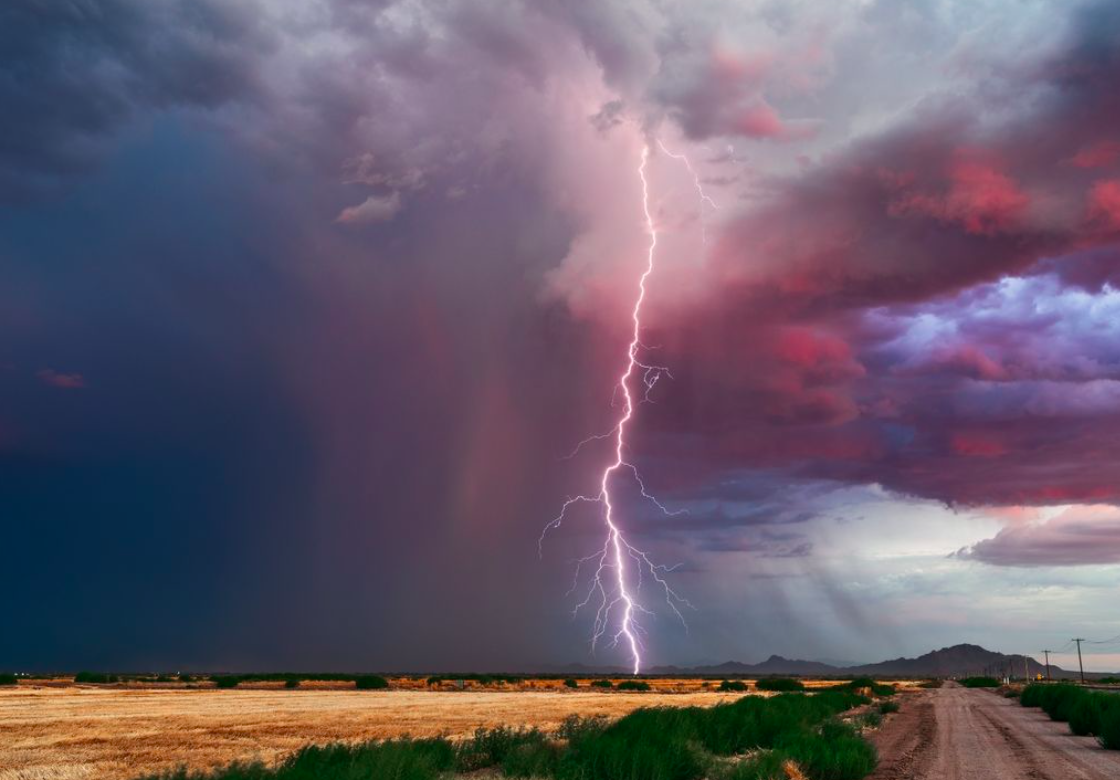RIO DE JANEIRO, BRAZIL – A “mega ray,” which crossed Uruguay and Argentina in June 2020, was validated as the new world record in duration by the World Meteorological Organization (WMO). Likewise, another mega thunderstorm surpassed the record for the longest duration, recorded in April 2020 in the southern United States.
LONGEST LIGHTNING STRIKE IN ARGENTINA
The certified longest-duration lightning stroke was discharged continuously for 17.102 seconds (+- 0.002 seconds) during a storm over Uruguay and northern Argentina on June 18, 2020.
Read also: Check out our coverage on Argentina

The previous record for the longest duration of a mega thunderstorm had been observed in northern Argentina on March 4, 2019, when its discharge occurred continuously for 16.73 seconds, 0.37 seconds shorter than the new record.
THE LONGEST LIGHTNING
It covered a horizontal distance of about 768 km regarding the longest extension. (+- a margin of 8 km) across the southern United States on April 29, 2020.
That record is equivalent to the distance between the U.S. cities of New York and Columbus (Ohio) or between London and the German city of Hamburg.
The new value for longest distance traveled by a lightning strike exceeds the previous record by 60 kilometers, which was 709 (+- 8 kilometers) across southern Brazil on October 31, 2018.
WORLD METEOROLOGICAL ORGANIZATION RECORDS
The WMO Committee on Extreme Weather and Climate Events keeps an official record of these at regional, hemispheric and global scales recognized these records.
The two new records were set in areas known for these phenomena in North and South America, namely the Great Plains in North America and the La Plata Basin in South America.
The new records validated by WMO, which maintains the official record of global, hemispheric, and regional extreme events, were published in the Bulletin of the American Meteorological Society.
“Measurements of extreme environmental events are living proof of nature’s full force and the scientific advances that now allow us to make such assessments. It is likely that even greater extreme events exist and that we will be able to observe them as lightning detection technology evolves,” said WMO’s rapporteur on global records of extreme weather and climate events, Randall Cerveny.
THE DANGER OF LIGHTNING AND HOW TO PROTECT YOURSELF
“These extremely widespread and long-lasting discharges were not isolated episodes but occurred in the context of active storms. Anytime you hear thunder, it’s time to find a safe place to protect yourself from lightning,” said lightning specialist and committee member Ron Holle.
Holle said the only places where lightning is not a threat are large buildings with wiring and plumbing networks, not structures such as those on the beach or at bus stops.
He added that another safe place is inside vehicles with fully enclosed metal roofs, not buggies or motorcycles.
Therefore, he advised that if reliable data indicates the presence of lightning within a 10-kilometer radius, shelter should be sought in a building or vehicle that protects from lightning.
“Lightning is a major hazard, and many people are killed each year. These new records highlight the serious public safety concerns associated with electrified clouds that produce lightning that can travel considerable distances,” said WMO Secretary-General Petteri Taalas, according to the AFP news agency.

